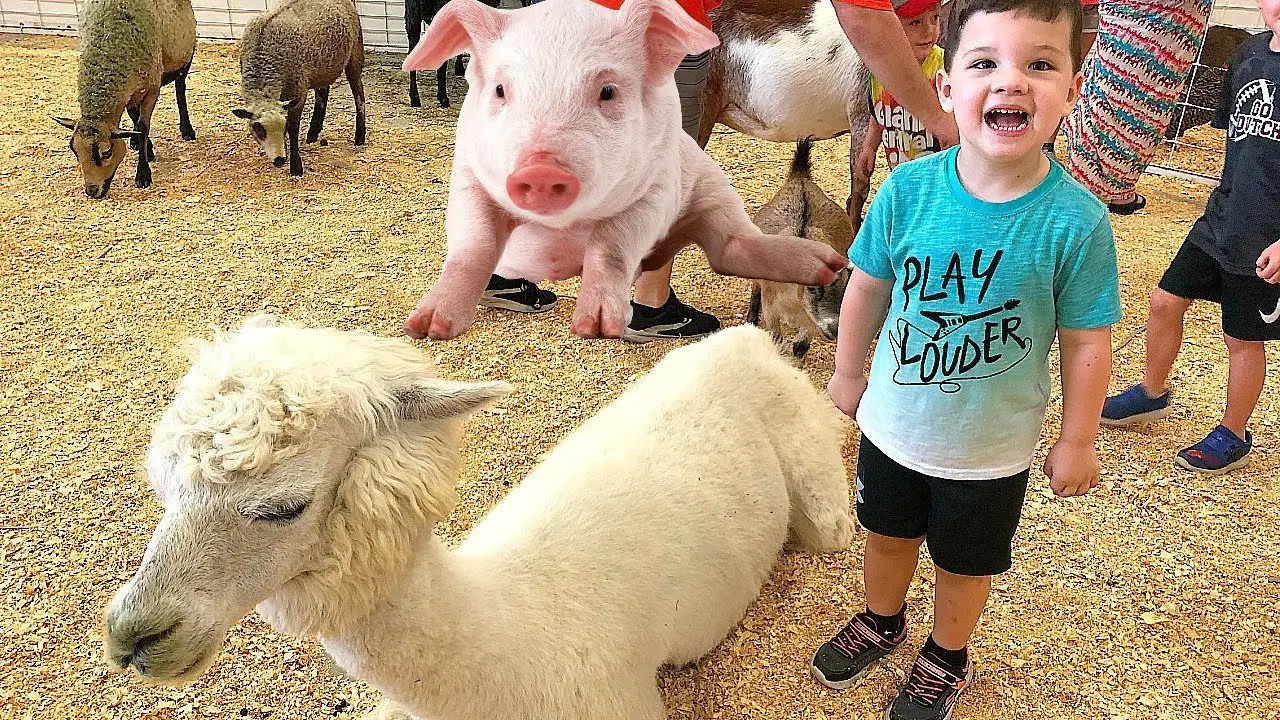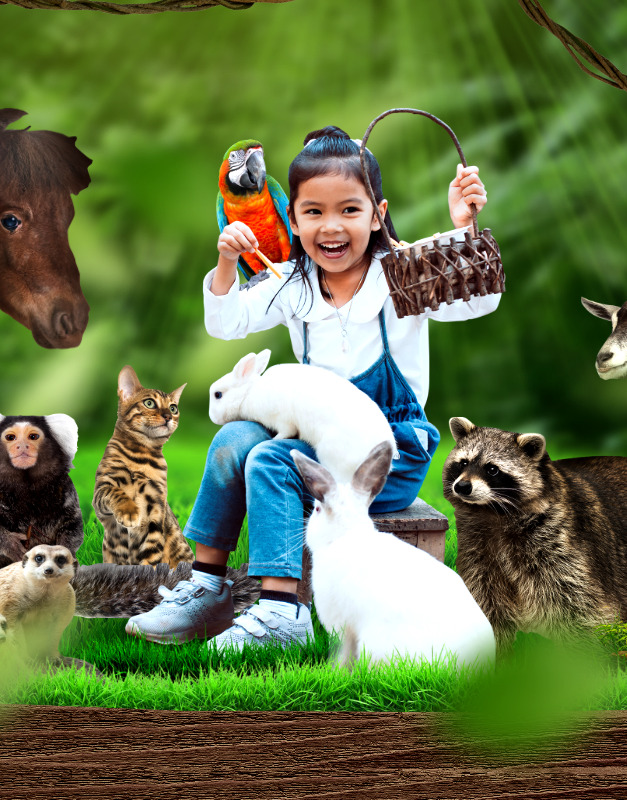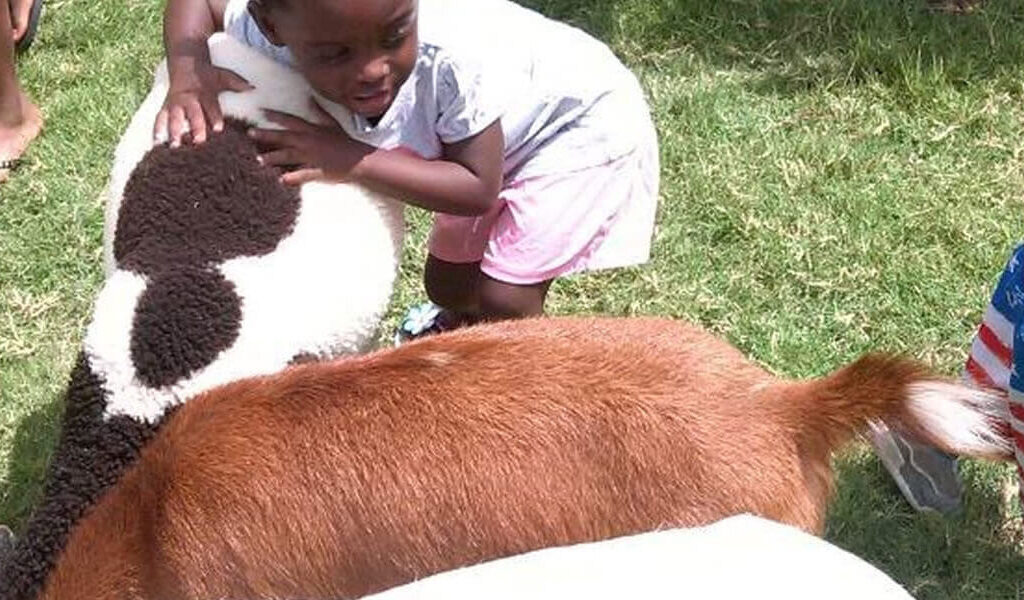
Pet zoos, also known as petting zoos or children’s zoos, are captivating enclaves where humans and animals converge, fostering a sense of wonder and connection with the natural world. These havens offer a unique opportunity to interact with a diverse array of furry, feathered, and scaled creatures, fostering a deep appreciation for the animal kingdom. Unlike traditional zoos, pet zoos prioritize close encounters, allowing visitors to observe, touch, and even feed the animals under the watchful eye of zookeepers.
A Glimpse into the Pet Zoo Experience

Stepping into a pet zoo is akin to entering a realm of enchantment, where the air hums with the gentle symphony of animal calls and the ground beneath your feet feels alive with anticipation. The sights and sounds of these vibrant spaces awaken the senses, igniting a sense of curiosity and excitement in both children and adults alike.
A Sanctuary for Diverse Creatures

Pet zoos serve as temporary homes for a wide spectrum of domesticated and farm animals, each with its own captivating personality and unique charm. From the playful antics of goats and sheep to the gentle demeanor of llamas and alpacas, these animals provide a window into the world of animal behavior and communication.
Interactions that Foster Connection
Pet zoos go beyond mere observation; they encourage hands-on interaction, fostering a sense of empathy and connection between humans and animals. Visitors are often invited to pet the animals, offering a gentle touch that conveys care and affection. The opportunity to feed the animals further strengthens this bond, creating a shared experience that lingers long after the zoo visit.
Educational Encounters

Pet zoos not only entertain but also educate, immersing visitors in a world of animal knowledge. Zookeepers serve as passionate educators, sharing insights into the animals’ natural habitats, behaviors, and conservation status. Through interactive exhibits and engaging storytelling, pet zoos instill a lifelong appreciation for the delicate balance of our ecosystem.
Benefits for Children

Pet zoos play a pivotal role in child development, providing a stimulating environment that nurtures cognitive, social, and emotional growth. The tactile experience of interacting with animals enhances sensory awareness, while the opportunity to observe animal behaviors fosters empathy and respect for living creatures.
Conservation Advocacy

Pet zoos often serve as ambassadors for conservation efforts, raising awareness about endangered species and the importance of protecting their habitats. By fostering a connection with animals, pet zoos inspire visitors to become active stewards of the environment, ensuring the well-being of wildlife for generations to come.
A Haven for Animal Welfare

Reputable pet zoos prioritize the welfare of their animal residents, ensuring that they receive proper nutrition, veterinary care, and a stimulating environment. These sanctuaries provide a safe haven for animals that may have experienced neglect or abuse, offering them a second chance at a happy and fulfilling life.
Addressing Common Concerns

While such a place offer a plethora of benefits, some concerns have been raised regarding animal welfare and the potential spread of zoonotic diseases. To address these concerns, pet zoos adhere to strict animal care protocols, ensuring that the animals’ physical and emotional needs are met. Additionally, stringent hygiene measures are implemented to minimize the risk of zoonotic disease transmission.
Conclusion
Pet zoos stand as vibrant oases amidst the urban landscape, offering a unique opportunity to connect with the animal kingdom. Through hands-on interactions, educational encounters, and a commitment to animal welfare, such places foster a deep appreciation for the natural world, inspiring generations to become stewards of our planet and its inhabitants.
Read More
- Free Online Courses Available in Chinese
- Online courses: Free Online Courses in Digital Marketing
- Decoding the Fascinating World of Talking Pet Birds
- Pet Zoomies: Unleashing the Frenzy of Feline and Canine Energy
Frequently Asked Questions
1. What is the difference between a pet zoo and a traditional zoo?
Pet zoos, also known as petting zoos or children’s zoos, prioritize close encounters with animals, allowing visitors to touch, feed, and interact with them under the supervision of zookeepers. Traditional zoos, on the other hand, focus on observing animals from a distance, providing a more structured and educational experience.
2. What are the benefits of visiting a pet zoo?
Pet zoos offer a range of benefits, including:
- Fostering a connection with animals: this place provide a unique opportunity to interact with animals, promoting empathy and respect for living creatures.
- Educational experiences: this place serve as educational hubs, teaching visitors about animal behavior, habitats, and conservation efforts.
- Sensory stimulation: The tactile experience of interacting with animals enhances sensory awareness, particularly for children.
- Promoting animal welfare: Reputable zones prioritize the welfare of their animal residents, ensuring their physical and emotional well-being.
3. What are some of the concerns surrounding such places?
Some concerns regarding such zones include:
- Animal welfare: Ensuring that animals receive proper nutrition, veterinary care, and a stimulating environment.
- Zoonoses: Implementing stringent hygiene measures to minimize the risk of zoonotic disease transmission.
Additional Insights into the World of Pet Zoos
Delving into the History of Pet Zoos
The concept of pet zoos dates back to the late 19th century, when small animal exhibits were introduced at fairs and agricultural shows. These exhibits provided an opportunity for urban dwellers to interact with farm animals, many of whom had never seen these creatures up close. Over time, pet zoos evolved into standalone attractions, gaining popularity as a family-friendly activity that fostered a sense of wonder and connection with the natural world.
Exploring the Diversity of Pet Zoo Animals
Pet zoos showcase an array of domesticated and farm animals, each with its own unique charm and captivating personality. From the gentle giants of the horse world to the playful antics of goats and sheep, these animals provide a diverse representation of the animal kingdom. Visitors can observe the graceful movements of llamas and alpacas, the inquisitive nature of pot-bellied pigs, and the gentle demeanor of rabbits and guinea pigs.
Unveiling the Educational Value of Pet Zoos
Pet zoos serve as vibrant educational centers, immersing visitors in a world of animal knowledge. Zookeepers, passionate about sharing their expertise, engage visitors in interactive exhibits and storytelling sessions, highlighting the animals’ natural habitats, behaviors, and conservation status. Through hands-on experiences and interactive displays, pet zoos cultivate a lifelong appreciation for the delicate balance of our ecosystem and the importance of protecting it.
Enhancing Child Development through Pet Zoo Interactions
Pet zoos play a crucial role in child development, providing a stimulating environment that nurtures cognitive, social, and emotional growth. The tactile experience of interacting with animals enhances sensory awareness, while the opportunity to observe animal behaviors fosters empathy, respect, and a sense of responsibility towards living creatures. Through guided interactions, children learn about animal care, nutrition, and the importance of respecting their physical and emotional needs.
Celebrating the Role of Pet Zoos in Conservation Advocacy
Pet zoos often serve as ambassadors for conservation efforts, raising awareness about endangered species and the importance of protecting their habitats. By fostering a connection with animals, such places inspire visitors to become active stewards of the environment, taking action to protect wildlife and ensure the well-being of our planet’s biodiversity.
Addressing Animal Welfare Concerns
While pet zoos offer a plethora of benefits, concerns have been raised regarding animal welfare and the potential spread of zoonotic diseases. To address these concerns, reputable places adhere to strict animal care protocols, ensuring that the animals’ physical and emotional needs are met. These protocols include providing proper nutrition, veterinary care, and a stimulating environment that mimics their natural habitats. Additionally, stringent hygiene measures are implemented to minimize the risk of zoonotic disease transmission, ensuring the safety of both animals and visitors.
Conclusion
Pet zoos offer a unique opportunity to connect with the animal kingdom, fostering a sense of wonder, empathy, and responsibility towards living creatures. Through hands-on interactions, educational encounters, and a commitment to animal welfare, such a place inspire generations to become stewards of our planet and its inhabitants. As we venture into the realm of animal, we embark on a journey into the heart of human-animal connection, discovering the profound impact that these interactions have on our understanding and appreciation of the natural world.


